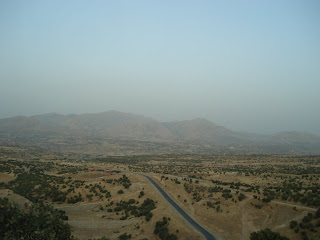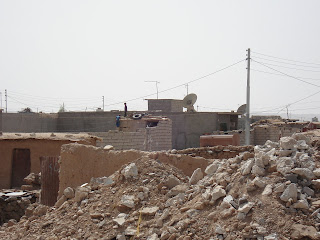Friday, August 24, 2007
Torture Museum, Sulaimaniyah, Iraq, 15 July 2007
 This building once was once where Saddam's forces tortured Kurds.
This building once was once where Saddam's forces tortured Kurds.

 This hook, which hangs from the ceiling, was used as a torture tactic.
This hook, which hangs from the ceiling, was used as a torture tactic.This hall commemorates the victims of Anfal. Each piece of glass on the wall, approximately 185,000, represents each person killed. Each light on the ceiling, between 4,000 and 5,000, represents each village destroyed.
Halabja Monument, Iraq, 23 July 2007
 Halabja monument, burned in protest in March 2006 by 300 local protesters discontent with the government.
Halabja monument, burned in protest in March 2006 by 300 local protesters discontent with the government. Part of the burned list of 5,000 names of the victims of the chemical attacks in Halabja.
Part of the burned list of 5,000 names of the victims of the chemical attacks in Halabja. The burned depiction of the city right after the attack.
The burned depiction of the city right after the attack.

Burned pieces of metal outside of the monument, including chemical bomb casings. Approximately 200 bomb shells still exist around the city.



































